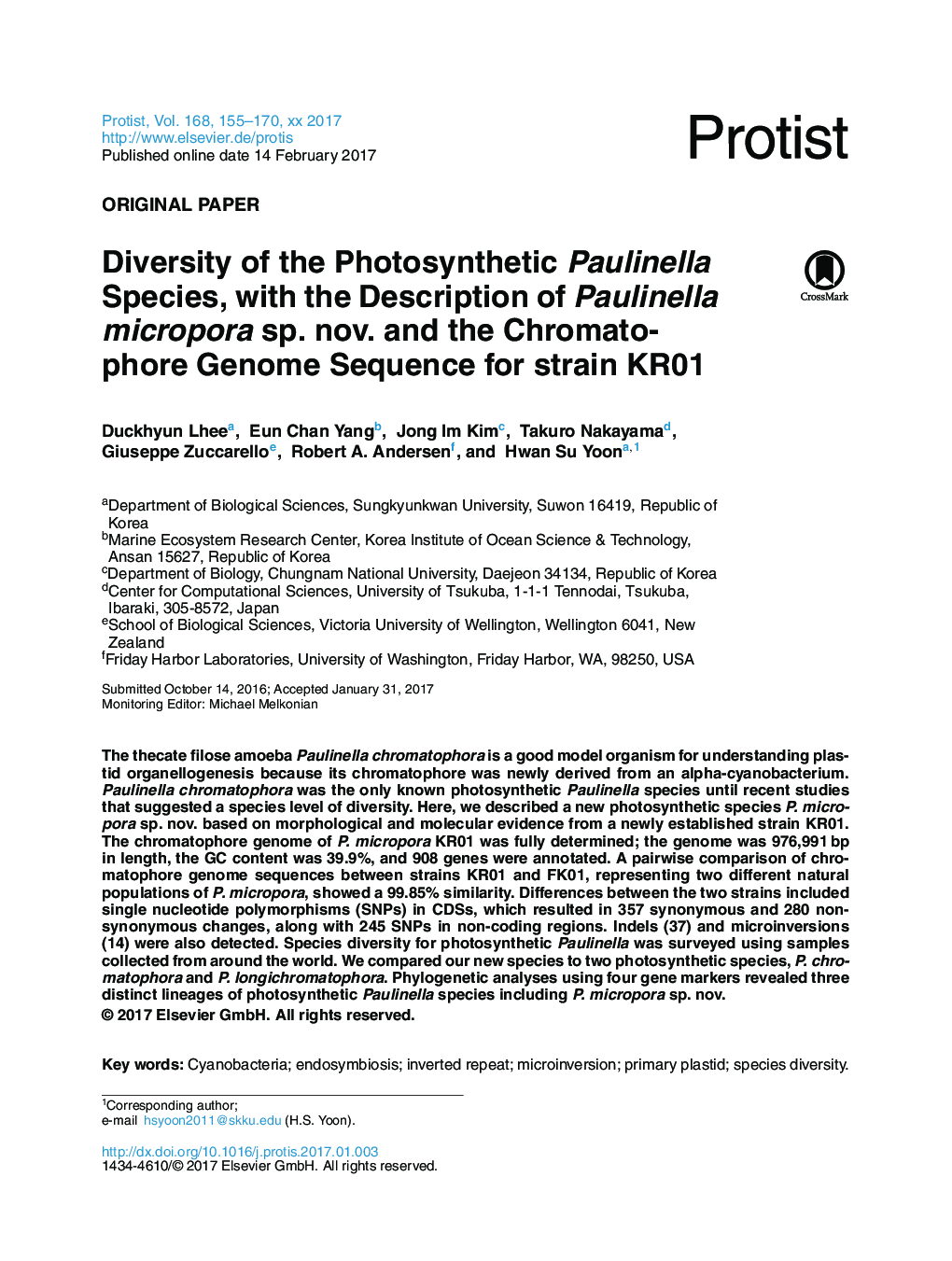| Article ID | Journal | Published Year | Pages | File Type |
|---|---|---|---|---|
| 5518972 | Protist | 2017 | 16 Pages |
The thecate filose amoeba Paulinella chromatophora is a good model organism for understanding plastid organellogenesis because its chromatophore was newly derived from an alpha-cyanobacterium. Paulinella chromatophora was the only known photosynthetic Paulinella species until recent studies that suggested a species level of diversity. Here, we described a new photosynthetic species P. micropora sp. nov. based on morphological and molecular evidence from a newly established strain KR01. The chromatophore genome of P. micropora KR01 was fully determined; the genome was 976,991Â bp in length, the GC content was 39.9%, and 908 genes were annotated. A pairwise comparison of chromatophore genome sequences between strains KR01 and FK01, representing two different natural populations of P. micropora, showed a 99.85% similarity. Differences between the two strains included single nucleotide polymorphisms (SNPs) in CDSs, which resulted in 357 synonymous and 280 nonsynonymous changes, along with 245 SNPs in non-coding regions. Indels (37) and microinversions (14) were also detected. Species diversity for photosynthetic Paulinella was surveyed using samples collected from around the world. We compared our new species to two photosynthetic species, P. chromatophora and P. longichromatophora. Phylogenetic analyses using four gene markers revealed three distinct lineages of photosynthetic Paulinella species including P. micropora sp. nov.
